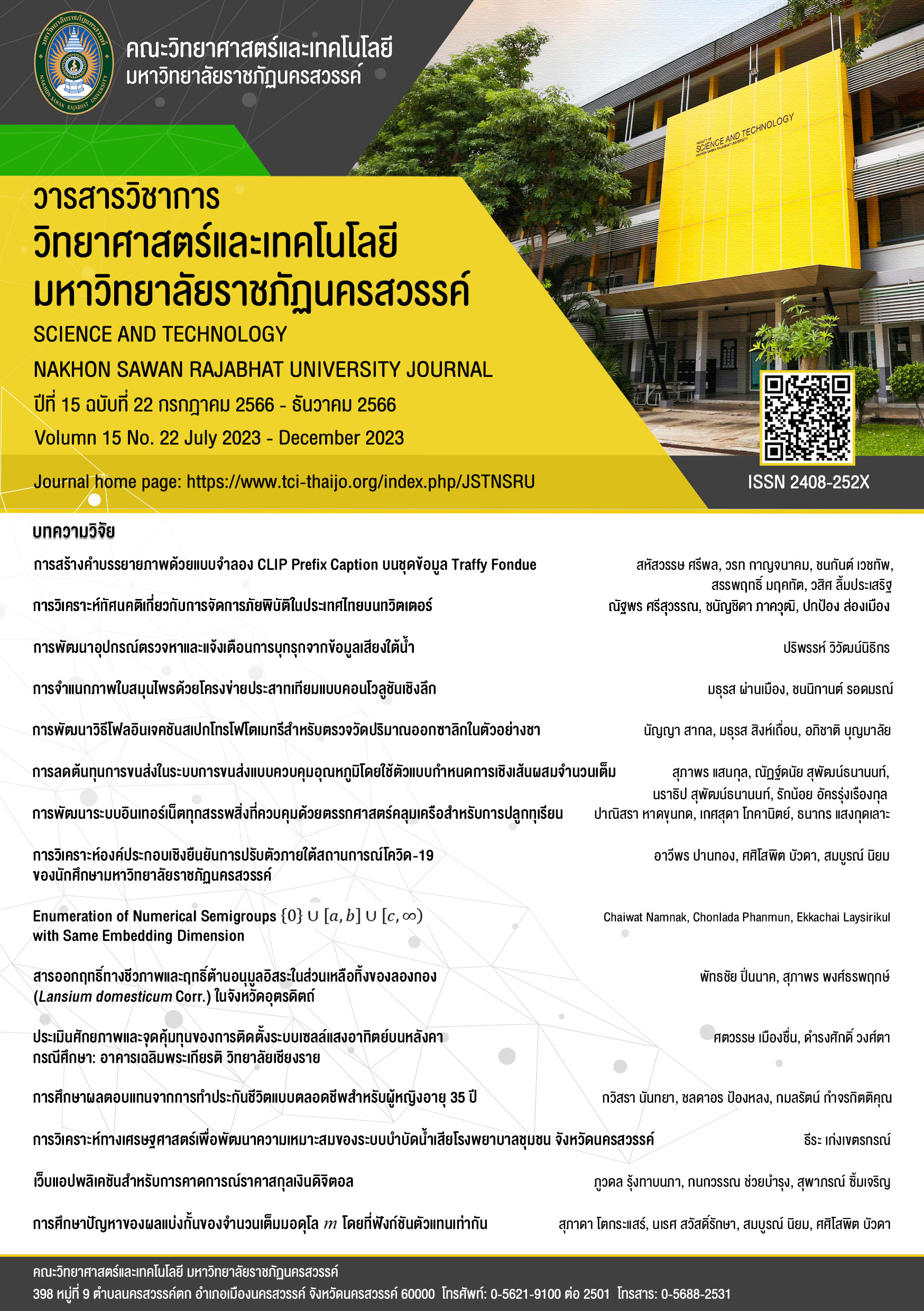Enumeration of Numerical Semigroups {0}∪[a,b]∪[c,∞) with Same Embedding Dimension
Main Article Content
Abstract
We consider the set defined as
where
be the set of all integer
such that
and
be the set integer
such that
when
and
are positive integers satisfying
. It is known that
is a numerical semigroup if and only if
. This research aims to characterize the minimal system of generators for numerical semigroups
and determine the count of numerical semigroups
that share the same embedding dimension.
Article Details

This work is licensed under a Creative Commons Attribution-NonCommercial-NoDerivatives 4.0 International License.
References
Chommi, N. (2020). Irreducible numerical semigroups {0}∪[a,b]∪[c,∞). (Undergraduate’s thesis). Naresuan University.
Curtis, F. (1990). On formulas for the Frobenius number of a numerical semigroup. Mathematica Scandinavica, 67, 190-193. https://www.jstor.org/stable/24492663
Davison, J.L. (1994). On the linear Diophantine problem of Frobenius. Journal of Number Theory, 48, 353–363. https://doi.org/10.1006/jnth.1994.1071
Johnson, S. M. (1960). A linear diophantine problem. Canadian Journal of Mathematics, 12, 390-398. https://doi.org/10.4153/CJM-1960-033-6
Kosasirisin, P. (2020). The number of k-symmetric numerical semigroup {0}∪[a,b]∪[c,∞). (Undergraduate’s thesis). Naresuan University.
Phosri, N. (2020). The number of k-symmetric numerical semigroup {0}∪[a,b]∪[c,∞) for k=3,4,5. (Undergraduate’s thesis). Naresuan University.
Rosales, J.C. & Garcia-Sanchez, P.A. (2009). Numerical semigroups. Springer: New York.
Sylvester, J.J. (1884). Mathematical questions with their solutions. Educational Times, 41, 171-178.
Tripathi, A. (2017). Formulae for the Frobenius number in three variables. Journal of Number Theory, 170, 368-389. https://doi.org/10.1016/j.jnt.2016.05.027


